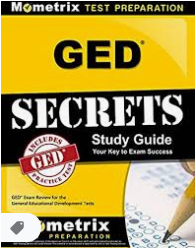GED test scores compare the test-taker’s performance in the five content areas with the performance of recent high school graduates. Individuals who take the GED test will be assigned a score between 200 and 800 in each of the content areas.
These scores are not directly related to the number or percentage of correct answers in each section of the exam. In order to determine whether an individual has passed the exam, most states will look at the scores for each section and the average of all the scores.

Prepare with our GED Study Guide and Practice Questions. Print or eBook. Guaranteed to raise your score. Get started today!
Although the minimum requirement varies from state to state, the GED Testing Service asserts that in order to pass an individual should get at least a 410 on each test as well as an average of 450.
The GED test is developed and administered by the American Council of Education at locations around the country. Prospective test-takers should visit the ACE website to register.
The GED test has five sections: Language Arts (Reading); Language Arts (Writing); Social Studies; Science; and Mathematics.
Language Arts
The Reading Test consists of 40 multiple-choice questions on passages from fiction (75% of the exam) and non-fiction (25%).
The fiction selections will include at least one from each of the following genres: poetry, drama, prose fiction before 1920, prose fiction from between 1920 and 1960, and prose fiction from after 1960.
The non-fiction selections will come from two of the following genres: nonfiction prose, critical reviews of the visual or performing arts, or workplace and community documents.
The Writing Test has two parts. The first part of the exam consists of 50 multiple-choice questions in the following areas of content: organization (15%); sentence structure (30%); usage (30%); and mechanics (25%). The second part of the Writing Test consists of an assigned essay on some familiar subject.
The scores from these two parts are combined to form a single Writing score.
Reasoning Through Language Arts Practice Test
Social Studies
The Social Studies Test has 50 multiple-choice questions in four content areas:
- geography (15%)
- history (US or Canada 25%, world 15%)
- civics and government (25%)
- economics (20%).
Social Studies Practice Test
Science
The Science Test consists of 50 multiple-choice questions in these content areas:
- physics and chemistry (35%)
- life science (45%)
- earth and space science (20%)
Science Practice Test
Mathematics
The Mathematics Test consists of two 25-question sections. In the first section, a calculator may be used.
The Mathematics Test covers material from the following content areas:
- number operations and number sense (20 to 30%)
- measurement and geometry (20 to 30%)
- data analysis, statistics, and probability (20 to 30%)
- algebra, functions, and patterns (20 to 30%).
Some formulas are provided for the mathematics section.




 Quick Links
Quick Links